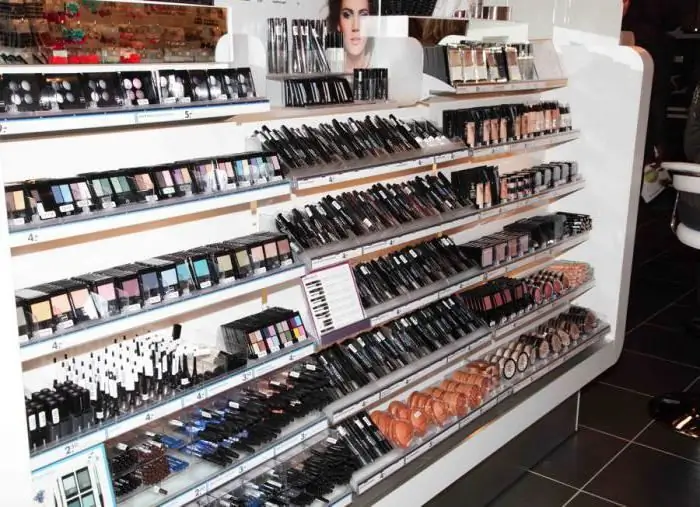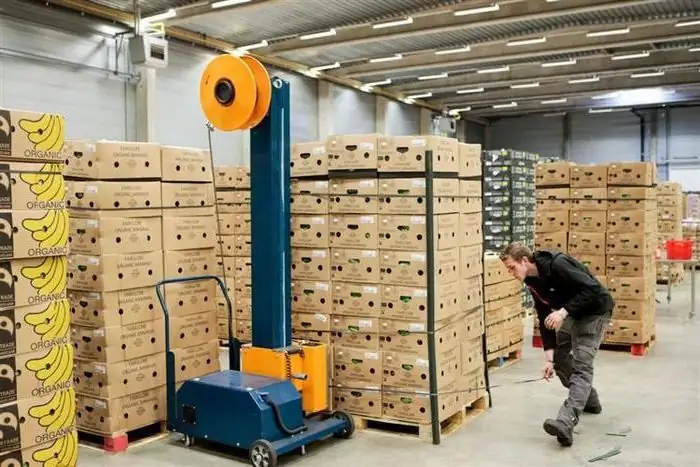2025 Author: Howard Calhoun | [email protected]. Last modified: 2025-01-24 13:10:47
The creation of a frame hive in 1814 by the Russian beekeeper P. I. Prokopovich made it possible to apply rational methods of keeping bees in practice. The inventions of artificial foundation (I. Mehring, Germany) and honey extractor (F. Hrushka, Czech Republic) that followed in the first half of the 19th century paved the way for industrial beekeeping.
A Brief History
In the next hundred years, the frame bee hive completely replaced the boards, decks and hollows. The outstanding chemist A. M. Butlerov, enthusiastic beekeepers I. E. Shavrov, S. K. Krasnoperov were engaged in the promotion of progressive methods and techniques.
In Russia, industrial beekeeping has become an independent branch of agriculture thanks to the efforts of a talented organizer, journalist and teacher Abram Evlampievich Titov, the founder and long-term editor of the Beekeeping Business magazine. Inspired by the work and example of the leading American beekeeper Amos Root, in 1911 in the village of Borshchagovka, Kyiv province, Titov founded the firstempire apiary-nursery. Before the October Revolution, there were about 200 beekeeping associations in the country, 15 specialized periodicals were published.
In the young Soviet Republic, Abram Evlampievich continued his research and production activities as head of the Izmailovsky experimental apiary. According to his project, in 1929 the first beekeeping state farm was created in the Far East. In subsequent years, similar enterprises began their work in Central Asia, Kabardino-Balkaria, and the Kuban.
Current State
The collapse of the Soviet Union did not have the best effect on the industry. A gigantic part of state farms and industrial farms was liquidated. Industrial beekeeping in Russia is hardly regaining its lost positions, but it is still impossible to talk about powerful and full-fledged functioning.

The issue of improving legal protection and creating a large-scale system of administrative regulation is urgent. There is a shortage of highly qualified personnel for beekeeping, effective and ambitious managers who can breathe new life into the industry.
The material and technical base needs a radical update. Work in the apiary should be mechanized and automated as far as possible, which will certainly have a positive effect on increasing production volumes and the competitiveness of Russian beekeeping products on the world market. The country has the potential and resources to push the giants of the industry: the USA, Australia, Canada.
Sizedoes it matter?
Only does industrial beekeeping differ from amateur beekeeping in scale? As for any production, its main goal is to maximize the output of goods of the required quality (honey and related products) with minimal material and time costs. The most important factors for improving profitability and growth rates are specialization and concentration.
The concentration of beekeeping implies the expansion of farms to optimal sizes. A profitable farm must contain at least 500 bee colonies.
Specialization is determined by the climatic zone:
- Southern regions of the country - breeding direction (delivery of batch bees, queen bees).
- Far East, Ural district - honey (honey, wax).
- Far North - pollination (pollination of crops in greenhouse complexes), etc.
In addition, all links in the technological chain (equipment and inventory, structures, methods and techniques) are subject to strict standardization and unification. In many ways, the success of the enterprise depends on the correct choice of the breed of bees and productive selection work. The relationship "man - bee" is completely rationalized, there is no room for "lyricism" - only business calculation.
Zones of developed beekeeping
From the study and determination of the potential volume of honey-bearing resources of the area, its availability, from the correct choice of the direction of specialization of the economy depends on its profitability and successful development.
In the forests of Tataria, Bashkortostan and Primorskythe edges of the main honey plant are various varieties of lindens. In the most favorable years, honey collection can reach up to 20 kg per family.

In mixed forests and meadow forbs of the European part of Russia, a bee hive can produce up to 3 kg of honey per day, in the southern regions on buckwheat, essential oil crops - up to 6 kg. The forage base of the area should provide not only honey collection, but also periods of intensive development and building up the strength of families.
Only honey resources will not allow the cultivation of beekeeping on an industrial scale. What needs to be changed in approaches and methods?
Industrial beekeeping technologies
The use of progressive bee breeding techniques is possible only in large apiaries (from 500 families), where the use of mechanization will bring a tangible effect. In more powerful farms, the entire composition of the apiary is divided into economic units (500-600 hives each) and a qualified specialist with an assistant is assigned to each, the necessary materials and tools are allocated (beekeeper's suit, smoker, chisel, etc.). After wintering and a cleansing flight of bees, primary processing is carried out at the base, and units are transported for spring bribes (no more than 100 hives per point). Only the repair team (2-3 people) remains on the central estate, maintaining and maintaining stock and equipment for beekeeping in good condition.
For the entire apiary, a single group care system is applied with a reduced number of inspections throughout the season. Specialists of the Research Institute of Beekeeping performthe following minimum of work (at the same time, the strength of families is leveled to give uniformity):
- spring inspection and feeding of bees,
- formation of layering,
- installation of stores or additional cases,
- selection of commercial honey, reduction of nests,
- preparing for wintering.
To determine the timing of the inspection, only 10-20 bee colonies of the apiary are taken into account, the indications of the control hive are taken into account. When choosing the main breed of bees, they give preference to less roiling and highly productive, most adapted to local conditions.

During the season, a minimum of 3-4 transportations of apiaries to flowering honey lands will be organized to increase profitability.
Material and technical base
For the central estate choose an area with developed infrastructure, with good access roads. Outbuildings (main production premises, cell storage, winter hut) should be located taking into account the convenience of operation, equipped with car ramps and lifting mechanisms. The capacity of the auto-tractor fleet should meet the needs of the enterprise in on-farm transportation.
When equipping the apiary, special attention is paid to the choice of hives. They must have standard sizes and interchangeable elements (cases, magazines, frames for hives). A strong and lightweight design is needed that can withstand repeated handling manipulations during movement and roaming.
Inventory for beekeeping, devices formechanized honey extraction, wax processing equipment (presses, centrifuges, steam generators).

Organization of your own carpentry workshop with good machines and specialists will quickly pay off the investment.
Unfortunately, many beekeeping products on the market today are obsolete. Often, plant engineers have to redo and upgrade existing equipment themselves. For example, an industrial dough mixer is used to prepare honey-sugar mass, a modified fifty-frame honey extractor is used to distribute syrup, etc.
Labor organization
At large beekeeping enterprises, the link method has become widespread, in which a team of 2-6 people is assigned to each apiary containing from 500 to 1000 families. A more qualified and experienced specialist is appointed as a link and bears financial responsibility. Two forms of labor activity are successfully practiced:
- Cooperation of labor. When carrying out large-scale work (transportation of an apiary, pumping out honey), for the prompt and high-quality execution of efforts, the links are combined.
- Division of labor. Each worker brings the performance of any technological process to automatism (for example, waxing frames) - develops a narrow specialization.

To increase efficiency, certain standards are set for each link, they keep strict records of output, consumablesand funds. It is advisable to practice combining professions and duties (beekeeper-driver, tractor driver; beekeeper-carpenter, etc.).
Industrial beekeeping is unthinkable without constant training and staff development. Industrial courses are the most accessible form of improvement. They are held in winter by a senior livestock specialist of the farm with the involvement of teachers from specialized educational institutions.

Groups of students are periodically recruited for beekeeping courses (theoretical classes and practice) at the Agricultural Academy. Timiryazev, Academy of Biotechnology. Skryabin (Moscow), on the basis of the Perm Pedagogical University, Pskov Agrotechnical College.
Product types and marketing issues
The results of the industry show that along with industrial problems, there are a lot of economic problems.
More than 80% of the farm's profits come from the sale of marketable honey, the healing properties of which have been known since ancient times. Wax is in demand as a raw material in the metallurgical, paint and varnish and printing industries, but the lion's share of the product (over 70%) returns to the industry in the form of artificial foundation.
Significant reserves of profitability of the industry lie in the development of technologies for the production, storage and processing of propolis, bee pollen, bee venom and bee pollen, royal jelly and drone larvae homogenate used in cosmetology and pharmaceuticals.
In addition, at the enterprises of the breeding directionThe bees themselves are also a commodity - up to 50% of the profits of the farms of the South of Russia are received from the sale of queen bees and packages.
Abroad will help us?
Foreign commercial beekeeping is characterized by high productivity and intensification of production. Legal and logistical conditions favor the use and improvement of standard standard technologies and equipment, and, as a result, the compliance of all received products with strict international criteria.

Industrial beekeeping in many countries receives substantial subsidies from the state, enjoys comprehensive support. For example, the US government has introduced customs duties on imported honey (up to 180% for China, up to 60% for Argentina). Funds allocated by US honey importers (up to $300 million a year) are directed to support domestic producers.
The experience of Canadian colleagues will be useful for Russian industrialists. The productivity of the bee colony in this country is more than twice as high as the world average.
Great importance is attached to the improvement and expansion of the range of companies producing goods for beekeeping. On the market there are automatic lines for printing honeycombs and pumping out honey, centrifuges and tanks, equipment for analyzing the quality of honey. The attention even to the little things pleases: the beekeeper's suit "Sheriff" from the Danish company "Sventi" is distinguished by a high degree of protection, convenience, and durability.
Prospects for development. Innovation in beekeeping
Competition of Western counterparts can be made by the developments of employees of the Ryazan Agrarian University in the field of mechanization and new methods for processing products of the beekeeping industry, including:
- technology and equipment for extracting and drying bee bread,
- propolis cleaning and pressing complex,
- Technology for the preparation of dough-like top dressing in a wax shell.
Most of the equipment has already been put into serial production. Technologies are being actively mastered by apiary farms.
Good prospects are associated with the use of artificial plastic foundation, innovative hives (from Styrofoam and certain types of foam), the use of thermal film to build the strength of bee colonies.
A revolutionary harvesting technology was introduced by Australian beekeepers. It is based on a completely new design of the frame for the hives and the bee "dwelling" itself. When filling honeycombs with honey, it is worth opening the tap, and the product flows down on its own into a container placed under the hive.
Many ideas and techniques are offered, sometimes almost absurd. Which of them will take root and benefit beekeeping and beekeepers, time will tell.
Recommended:
Education for managers: programs: questions, topics. Executive courses

What is leadership training, why is it needed, how is it organized, and what can senior decision makers learn? These are the questions that will be covered in this article. In addition, the content of the main advanced training courses for managers will be described
Excisable goods are recognized List of excisable goods

Excises are a type of indirect taxes. They are levied on payers who produce and sell certain categories of products. Excises are included in the cost of goods and, accordingly, are passed on to the final consumer
Tasks and goals of management accounting. Management Accounting and Budgeting Courses

Management accounting is always focused on determining the cost of products / services and company costs. At the same time, each enterprise independently determines how information will be processed within the framework of a particular production. If accounting is used correctly, then managers will be able to determine the break-even points and budget correctly
Preparing goods for sale. Types and purpose of goods. Pre-sale preparation

Preparation of goods for sale includes a whole range of actions necessary for quick turnover and increase the profit of the outlet
Re-sorting of goods is a simultaneous shortage of one item of goods and a surplus of another. Accounting for sorting during inventory

When conducting an inventory at trading enterprises, shortages, surpluses, and regrading are often revealed. With the first two phenomena, everything is more or less clear: there is either a lot of this or that product, or a little. Re-sorting of goods is a rather unpleasant and difficult situation

